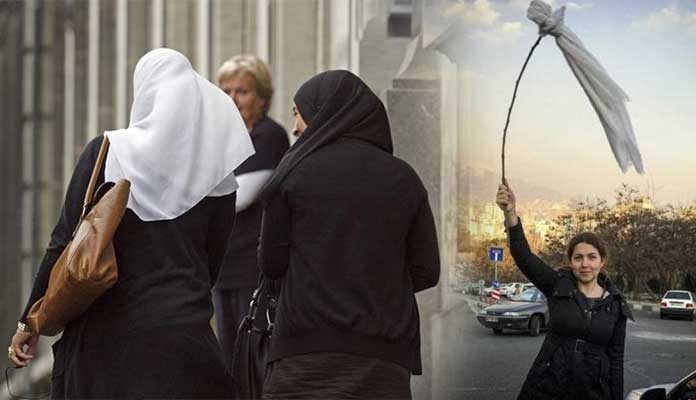History bears testimony to the Iranian women’s struggle against dictatorship and draconian laws that violate the fundamental human rights. Whether it is the constitutional revolution of Iran in 1905-1911, Iranian Revolution of 1979 or movement to raise voice against the human rights violations by the religious government, Iranian women have always stood in the front row to make their contribution.
Iranian Women’s Struggle against Religious Laws
Iran is a perfect example of how imposing of liberal extremism as well as of religious extremism against the will of the people is a gross violation of human rights. Women have suffered a lot in the course of Iran’s journey from liberal to conservative dictatorships.
Implementation of gender disparity in the name of Islam has reduced the status of women in Iran, to the second class citizen.
Nowadays, Iranian women with bare head and scarves hooked up on the sticks have become an emblem of another potential Iranian revolution. It is evident that these women who are posing in this way are registering their protest against the laws that make it compulsive for them to wear Hijab.
#girls_of_enghelab_street#دختران_خیابان_انقلاب pic.twitter.com/kZ5MvJ4bQF
— Alireza Alyshvandi (@joker_a077) 3 February 2018
Apart from this, there are so many other laws that make the Iranian women deprived of their fundamental rights.
Potential Anti-Women Laws in Iran
Here are few laws that are shaping Iranian women’s struggle for their rights, in the modern era.
Need to Take Husband’s Permission for Traveling Abroad
Iranian women can’t travel abroad without the permission of their husbands. Single women who are less than 40 years old also need their father’s approval.
Husbands can ban their wives from traveling abroad. One recent example is Iranian soccer team captain Niloufar Ardalan who couldn’t play Women’s Futsal Championship in Malaysia as her husband didn’t allow her.
Ban on Women Watching Match in Stadiums
Iranian women can’t enter the stadiums to watch live matches. They can’t even go to watch the Volleyball, a favorite sports in Iran. A few years back, Human Rights Watch launched a campaign #Watch4Women; its purpose was to ask International Volleyball Federation to make the laws that bar Iran from holding the tournaments until it allows women in the stadium.
Discriminatory Laws
- According to Iranian laws, the testimony of man carries twice the weight of women. Further, women’s evidence is not considered enough in all the cases. Apart from this, the lower age limit for girls as a criterion to determine the criminal responsibility is eight years nine month.
- Iranian laws also grant the husband right to divorce without any reasons. According to article 1133 of the civil code (1928), “a man can divorce his wife whenever he wishes to do so.”
- Article 1168 of previous penal code allow the guardianship of the child to father or his grandfather.
- Article 63 of the penal code makes it compulsive for women to wear Islamic hijab in streets and public places. Otherwise, they have to pay fine.
Protests against Hijab in Iran
?? More women in Iran are risking imprisonment by removing their hijab to protest against forced hijab and posting it with the hashtag #دختران_خیابان_انقلاب (meaning “the girls of Enghelab street”) ?? where Vida Movahed first took off her hijab. pic.twitter.com/c5w9VEXF8y
— Xavi Ruiz ? (@xruiztru) 1 February 2018
The recent wave of protests in Iran has initiated another era for Iranian Women’s Struggle against Islamic laws. It all began when Vida Movahed, 31 years Old Iranian women stood bareheaded in Enghelab street. Her brave act of defiance made her no less than an icon for women’s struggle against the discriminatory laws. Movahed was arrested, but her courage has made many Iranian women pose bareheaded with their headscarves stranded on sticks and share their picture on social media with the hashtag of #girls-enghelab-street.


